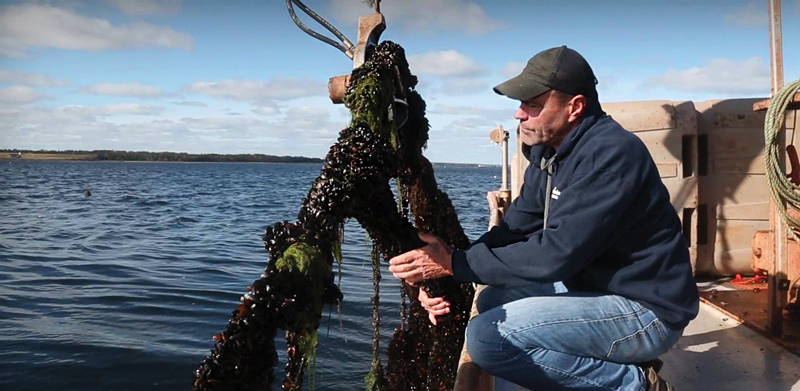Account Login
Don't have an account? Create One

In a region the rest of the world often appreciates only for its coastal vistas and pastoral beauty, the virtuous marriage of hard science and bold business is transforming the way people live and work, one extraordinary innovation at a time.
This is Genome Atlantic, a not-for-profit corporation with a mission to help Atlantic Canada reap the economic and social benefits of genomics and associated technologies in everything from agriculture, fisheries and aquaculture to energy, the environment, forestry, mining, and human health.
Says Steve Armstrong, Genome Atlantic’s President and CEO: “Delivering meaningful socio-economic impact requires innovation-friendly companies, creative academic experts, and a mix of private and public sector investment. That means exploring opportunities, finding partners and developing proposals. We are the connective tissue that has been bringing those key success factors together for 21 years.”
Since its inception in 2000, Genome Atlantic has been instrumental in putting together approximately $150 million in client-led projects focused on delivering tangible economic and health benefits. Now, says Armstrong, the region’s demand for genomics-based solutions has never been greater.
“Increasingly DNA-based or genomic technologies are an essential element of the innovation toolkit for companies and select public sector entities spanning just about any sector you can imagine,” he notes. “Many companies simply will not remain competitive if they do not continue – or in some cases, start – using genomics technologies. From optimizing agri-food and aquaculture production, to growing trees with the desired traits, to effectively monitoring their environmental footprint, to adapting to climate change: Genomics is key to all of that.”
The numbers are, indeed, convincing. Over the past five years alone, Genome Atlantic has seen a three-fold growth in R&D investment, almost all driven by end-user need and much of that from the private sector. In fact, business expenditure on R&D (BERD) represents about 25 per cent of the corporation’s project portfolio, compared with eight per cent in 2008. That portfolio consists of 23 current active projects valued at close to $60 million, in partnership with 25 companies and 15 universities.

It’s an impressive track record, but perhaps not surprising. In recent years, there’s been a culture shift within the overall Atlantic innovation ecosystem, characterized by an enhanced level of risk tolerance and, as Armstrong puts it, “an activation of the leadership and confidence gene, over the ‘let’s follow’ gene. It’s a simple truth that success breeds success.”
John Knubley, who recently joined Genome Atlantic’s board, agrees. He’s a former Deputy Minister of Industry/Innovation, Agriculture and Intergovernmental Affairs, and Associate Deputy Minister of Transport and Natural Resources, for the Government of Canada, and former Vice President of the Atlantic Canada Opportunities Agency (ACOA) for Nova Scotia.
“DNA-based or genomic technologies are pushing the rate of change in Atlantic Canada in ways that people could not have imagined only a few years ago,” he says. “Both in terms of science and of the business models and practices private companies adopt and pursue, Genome Atlantic understands where the innovative research and powerful new commercial applications for this research intersect. It’s also terrifically well connected to both the business and innovation segments of society in this region and across Canada.”
In fact, key to Genome Atlantic’s success is the broad array of partners it works with – companies, researchers, universities, hospitals, health centres, clinicians, research institutions, industry associations, not-for-profits, public sector departments and agencies – to turn problems and challenges into solutions and opportunities. As part of a cross-Canada network that includes Genome Canada and five other regional Genome centres (including Genome BC, Genome Alberta, Genome Prairie, Génome Québec and Ontario Genomics), Genome Atlantic is able to tap into a rich pool of genomics R&D talent from across the country to benefit Atlantic Canada projects. “Technology development is one thing, but custom-fit solution development for a specific company or sector need is quite another,” Armstrong says.
As a result, the opportunities for innovation and commercial growth across each of the sectors Genome Atlantic serves are both broad and deep.
Consider Marker Assisted Selection disease surveillance and climate change adaptation in finfish and shellfish industries; or genomic instruments to help the energy sector address corrosion, extraction, and exploration challenges. There are also biological technologies designed to tackle tough environmental remediation projects in the mining industry; and efforts to establish a global standard for environmental assessment (eDNA). The list goes on.
Says Knubley: “If you look at some of Genome Atlantic’s projects, including blue mussel production, and helping produce superior spruce trees, you can see the tremendous amount of innovation and work involved.”
Terry Ennis is President and CEO of Atlantic Aqua Farms in Prince Edwards Island – one of North America’s largest growers, processors, and distributors of high-quality shellfish, including mussels, oysters and clams. He says an $800,000 Genome Atlantic initiative to provide the genomic basis for a blue mussel selective breeding program – making the bivalve resilient to environmental pressures – will be instrumental in strengthening the industry and helping it to be more resilient to the effects of climate change and acidification.
“The reason we jumped at the opportunity was knowing that climate change is certainly coming,” he says. “And we’re seeing extreme storms happening like (Hurricane) Dorian a couple of years ago. Even with these challenges, though, the application of genomics tools could double blue mussel production here within the next ten years – from 50 million to 100 million pounds.”
That’s important, he stresses, considering that PEI already accounts for 80 per cent all mussels sold in North America, generating $60 million in direct economic growth, jobs for 1,500 Islanders, and salaries worth $11 million a year.

In New Brunswick’s forests, genomics is playing a crucial role in both protecting and strengthening another long-standing industry. “Climate change could be a big threat to the health of our forests, as well as forests all over the world,” says Josh Sherrill, JD Irving Ltd.’s (JDI) genetics and forest productivity leader. “JDI has been in business since 1882 and sustainability is a core corporate value. We can use genomics to explore how climate and genetics interact. We can make use of many field tests to explore the effects of climate and genetics on tree growth and health.”
Specifically, JDI has been collaborating with Genome Atlantic, Génome Québec, and many other partners on something called FastTRAC, a project that produces a series of diagnostic tools that tells the forester which of its trees under cultivation possesses desirable growth and health characteristics and, so, the right genetic stuff for future generations of timber.
“Trees are slow to breed and grow, but genomics allows us to move faster,” Sherrill says. “Indeed, with genomic profiles, the genetic value of a tree can be estimated while it is still a seedling, reducing the need for field evaluation. By contrast, conventional breeding practices can require growers to wait up to 20 years before some economically and environmentally important traits can be assessed in the field.”
JDI has organized its white spruce breeding program based on its FastTRAC collaborations. At the same time, Sherrill says, “An opportunity we are exploring is where red and black spruce hybridize frequently in nature. We can use genomics to understand the proportion of each species’ genome that is included in a given tree. This helps us to design a breeding program that can make use of the desired adaptations from each species.”
He adds: “All of these applications will result in increased growth and other quality traits in the seedlings we plant, which are, in turn, intended to grow our wood supply for our sawmills and pulp mills. That means more jobs and economic development throughout the supply chain from the forests to the consumer.”
There’s every indication these and other happy unions between genomics and business in Atlantic Canada will continue to strengthen and grow. Technological synergies among genomics, remote sensing, autonomous vehicles, and artificial intelligence are already underway. Meanwhile, the availability of investment and funding across the innovation continuum – from the discovery to translation and commercialization phases – continues to accelerate.
Says Armstrong: “Combine these with private sector leadership at a time when both economic and environmental realities demand innovative responses, and you get the perfect conditions for catalytic advancement in a variety of promising fields.” •
Comment policy
Comments are moderated to ensure thoughtful and respectful conversations. First and last names will appear with each submission; anonymous comments and pseudonyms will not be permitted.
By submitting a comment, you accept that Atlantic Business Magazine has the right to reproduce and publish that comment in whole or in part, in any manner it chooses. Publication of a comment does not constitute endorsement of that comment. We reserve the right to close comments at any time.
Cancel